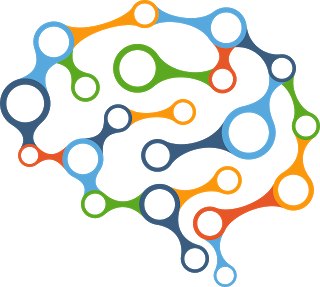The Cognitive Gap Cause and Effect
 Cognition is the mental process of acquiring knowledge through thought, experience, and senses. The "mind" represents our consciousness and awareness. It is the software that promotes and regulates each function and each action of our body, from the reproduction and reconstruction of our cells to the food process and distribution, to our voluntary and involuntary movements, and to all our behaviors, etc. However, the brain activities function for survival instincts are still primitive, what are the further aspect of human sophistication in regards to vision, communication, and innovation for problem-solving or overcoming challenges? And what are further problems caused by cognitive gaps and how to bridge them effectively?
Cognition is the mental process of acquiring knowledge through thought, experience, and senses. The "mind" represents our consciousness and awareness. It is the software that promotes and regulates each function and each action of our body, from the reproduction and reconstruction of our cells to the food process and distribution, to our voluntary and involuntary movements, and to all our behaviors, etc. However, the brain activities function for survival instincts are still primitive, what are the further aspect of human sophistication in regards to vision, communication, and innovation for problem-solving or overcoming challenges? And what are further problems caused by cognitive gaps and how to bridge them effectively?
Cognitive gaps further enlarge problem-solving gaps: It is a simplification to call cognition thinking, which means people acquire knowledge through thinking and sensing. The mind is something more personal. It is a label that individuals create for that collective sensation or awareness that is on their own. People are different, not because we look differently, but because we think differently. The cognitive gap is one of the serious problems for both problem-solving and innovation. Because cognitive gaps will cause the blind spots for either defining the real problem or solving it. And if you don’t have a sound solution to each newly created problem, you’ll have very little chances to succeed solving the main problem, because all is connected. And if you can’t connect the dots, you also cannot switch on creativity and inspire innovation. If you only fix the symptom, not the root cause, then it perhaps causes more problems later. And that is why our world today contains, in reality, more problems creators than true problems solvers because trying to solve a problem, by nature will create others. To overcome the common challenges and advance the human race, we have to really dig beneath the superficial layer, see around the corner and transcend the interdisciplinary knowledge, to get to the heart of the matter. Thus, it is important to close cognitive gaps via building heterogeneous teams with the cognitive difference and complementary skills/capabilities/background/experience, to broaden the vision, and deepen understanding.
Cognitive gaps cause innovation gaps: When we explore the mental process of acquiring new knowledge through thought, experience, and senses, the cognition involves exploring varieties of meanings/thoughts and abandoning old and establishing new relations. The cognitive gap disconnects many things which are supposed to be interconnected, hence, it becomes the barrier for connecting the dots to stimulate creativity, or capture the insight. Hence, the heterogeneous team with cognitive differences is more innovative than the homogeneous group setting, as good ideas are multidimensional, they take root in unsuspected places and they evolve with time and by unexpected connections. From talent management perspective, to bridge cognitive gaps, as well as innovation gaps, the management needs to pay more attention to those shining spots: Who can bring unique viewpoint, who can find an alternative way to solve old or emergent problems, who can take extra miles to delight customers; who has the courage to provide bosses constructive feedback with good intentions; who is just unconventionally different and who is positive influencers for building a culture of innovation? People also need permission to push ideas around an organization without the fear of failure and once people see things being implemented and making a difference, the confidence increases and they will become even more innovative.
 The cognitive gap also causes leadership effectiveness gap: Leadership is more about future but starts at today. As leaders, we facilitate eliciting the views if they don't think of them on their own. People also have different experience and personality, therefore, they may have the different way to do things or provide feedback, as a leader, to bridge leadership effectiveness gap, you need to not just listen to what’s being said, more importantly, what’s not being said. One of the significant tasks for leaders and managers is to make either strategic or operational decision. Decision effectiveness is often compromised by group thinking (group polarization means that a group of people can make a more extreme decision than an individual.) which is often caused by the homogeneous team setting with cognitive gaps. The digital leadership is crucial to encourage “Thinking Differently.” It is important to be able to be objective and gain a different view in order to develop and have a better understanding of certain topics or problems that may occur. Understanding cognitive intelligence also helps improve leadership and management effectiveness. One of the most influencing aspects of people's psychology is how they perceive the world around and how they relate to it. This is a function of things like cognitive intelligence, and the collective psychology shapes the culture of organization, how people think and do things in the organization, by understanding the proving psychological concept and practicing them, businesses can instill the positive psychology to their workforce, close the gaps created by outdated mentality, build culture of learning and innovation, and ultimately achieve high performance result.
The cognitive gap also causes leadership effectiveness gap: Leadership is more about future but starts at today. As leaders, we facilitate eliciting the views if they don't think of them on their own. People also have different experience and personality, therefore, they may have the different way to do things or provide feedback, as a leader, to bridge leadership effectiveness gap, you need to not just listen to what’s being said, more importantly, what’s not being said. One of the significant tasks for leaders and managers is to make either strategic or operational decision. Decision effectiveness is often compromised by group thinking (group polarization means that a group of people can make a more extreme decision than an individual.) which is often caused by the homogeneous team setting with cognitive gaps. The digital leadership is crucial to encourage “Thinking Differently.” It is important to be able to be objective and gain a different view in order to develop and have a better understanding of certain topics or problems that may occur. Understanding cognitive intelligence also helps improve leadership and management effectiveness. One of the most influencing aspects of people's psychology is how they perceive the world around and how they relate to it. This is a function of things like cognitive intelligence, and the collective psychology shapes the culture of organization, how people think and do things in the organization, by understanding the proving psychological concept and practicing them, businesses can instill the positive psychology to their workforce, close the gaps created by outdated mentality, build culture of learning and innovation, and ultimately achieve high performance result.
In short, cognition is a perception, sensation, and insight. Cognition reorganizes parts of one’s belief system, and thoughts navigate within one’s present belief system as it is. There is no magic “thinking sauce” to make one’s mind profound, or leadership effective, it is to keep learning agile for updating knowledge and close cognitive gaps via brainstorming.
Follow us at: @Pearl_Zhu
Published on February 28, 2017 23:26
No comments have been added yet.



